 3E1FA2E1-B599-4FB5-BEEE-B262ECB30CF5.jpeg 196.14K
17 downloads
3E1FA2E1-B599-4FB5-BEEE-B262ECB30CF5.jpeg 196.14K
17 downloads DE7CDD68-B520-4788-AB3E-9D24A4F7A490.jpeg 165.15K
18 downloads
DE7CDD68-B520-4788-AB3E-9D24A4F7A490.jpeg 165.15K
18 downloads A9FD4B2D-FEC5-4479-8FED-199FC90AC9F0.jpeg 170.22K
19 downloads
A9FD4B2D-FEC5-4479-8FED-199FC90AC9F0.jpeg 170.22K
19 downloads
Posted 20 June 2019 - 06:52 PM
 3E1FA2E1-B599-4FB5-BEEE-B262ECB30CF5.jpeg 196.14K
17 downloads
3E1FA2E1-B599-4FB5-BEEE-B262ECB30CF5.jpeg 196.14K
17 downloads DE7CDD68-B520-4788-AB3E-9D24A4F7A490.jpeg 165.15K
18 downloads
DE7CDD68-B520-4788-AB3E-9D24A4F7A490.jpeg 165.15K
18 downloads A9FD4B2D-FEC5-4479-8FED-199FC90AC9F0.jpeg 170.22K
19 downloads
A9FD4B2D-FEC5-4479-8FED-199FC90AC9F0.jpeg 170.22K
19 downloads
Posted 20 June 2019 - 07:20 PM
Power Steer? I don't think I see any, and what looks like a standard Torana rack.
Discs, don't look like early commodore? Early commodore has quite a deep disc, those look like they are a separate Hub and Hat, like say VT commodore, BUT, VT has a deeper hat.
I'm kind of thinking they are a falcon disc, BA perhaps? and maybe also a BA caliper, due to the mounting adapter plate, looks pretty much like a Hoppers Stoppers kit at a guess, and the standard disc spindles swapped side for side to put the caliper out the back.
Might need some more pics to be certain.
Posted 20 June 2019 - 08:02 PM
I'm no expert but do have a Hoppers kit and looks like it. Also they supply the braided hose with the kit like that and it is run behind the stub axle. I also think I have read that they do sometimes recommend/supply the BA caliper but not 100% sure. Cheers Ron
Posted 20 June 2019 - 09:41 PM
I think he wants to convert to P/Steer
In which case... get a Lenny rack
And yes looks like a Hoppers kit
Easy way to tell what caliper (looks like AU2 to me) is to check the pad shape
DB1375 for AU2/3. 169mm long
DB1473 for BA... 190mm long
https://www.bendix.com.au/catalogue
And disc diam 287mm for AU2 , 298mm BA
Posted 20 June 2019 - 11:09 PM
The main thing you'll need to confirm for a power steering conversion is what stub axles and steering arms have been fitted.
There should be part numbers cast into them that will identify what you have. Steering arms need to match the spindles and may need to be reamed to accept a conversion tie rod end.
Posted 21 June 2019 - 02:45 AM
Posted 21 June 2019 - 05:01 AM
Just be careful when selecting Wilwood calipers.
Australian Design Rules require caliper pistons to have additional dust seals while the American design rules apparently don't, so with Wilwood being an American brand there are only a few model calipers that actually comply with Aussie rules.
I have a list somewhere but haven't updated it for 12 months or so, there may well be more of a range available now?
Posted 21 June 2019 - 07:31 AM
Posted 21 June 2019 - 08:28 AM
Also it looks like those Lower Control Arms are from a UC Torana (earlier models don't have the steering stops).
I can't see the Upper Arms well enough in those photos to tell whether they're UC or not, if you can take a picture from the top it will be easy to tell as the ball joint is set further rearward compared to earlier models (plus they're stamped left & right).
The K-member appears to be an earlier version with the rubber-bush-mounted rack, but again, it's hard to tell without better photos. I notice the glovebox photo in your build thread has an RTS badge so assuming it's original then you possibly have an LX post-RTS K-member?
Edited by Bigfella237, 21 June 2019 - 08:30 AM.
Posted 26 June 2019 - 06:33 PM
 94B32324-CD5A-4D54-87D4-DBB4ADBAEB8A.jpeg 148.9K
7 downloads
94B32324-CD5A-4D54-87D4-DBB4ADBAEB8A.jpeg 148.9K
7 downloads 9BEAF539-E35A-4C5B-9C80-5B3CA73AA143.jpeg 99.42K
5 downloads
9BEAF539-E35A-4C5B-9C80-5B3CA73AA143.jpeg 99.42K
5 downloads
Posted 26 June 2019 - 10:00 PM
Those are just the standard LH/LX upper control arms.
Seems weird that the guy has fitted LCAs from a UC but not the UCAs (which are the most desirable).
I still can't read the casting numbers on the stub axles, where you've scratched is the correct spot but I can't make it out, it should have "HOLDEN" followed by some numbers...?
The steering arms you also need the casting numbers from, there's a few different arms but unless you're looking at them side-by-side you'd be hard pressed to tell the difference...

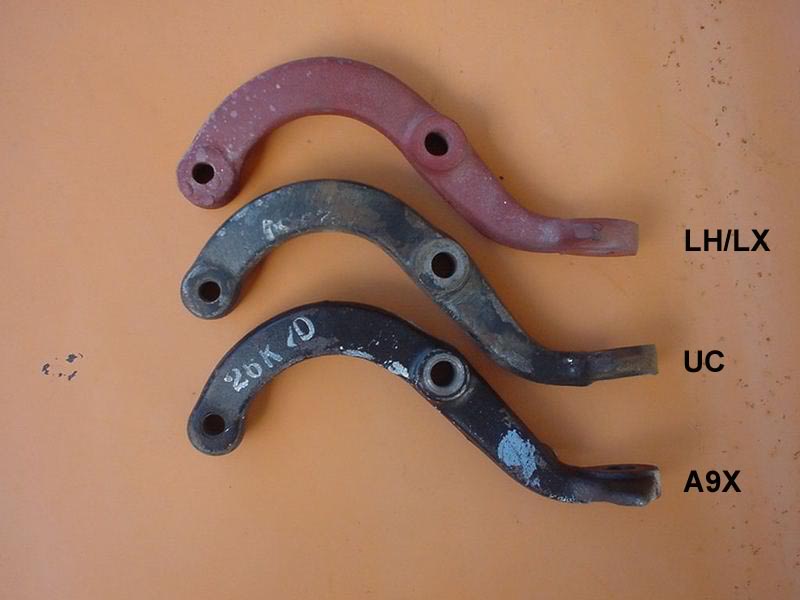
Posted 26 June 2019 - 10:26 PM
Posted 26 June 2019 - 11:07 PM
If the car started life as a Sunbird then a Sept '76 build could be RTS (the changeover was in 09/76), but non-Sunbird models didn't get RTS until sometime in Feb '77
Except that the engine mounting points welded to the K-frame were different for the Opel-engined Sunbird, so unless you can see where they've been re-welded, either the K-frame has been replaced or the dash has (or both).
It's not a UC K-frame because the UCA pivots are too low and it's missing the upper shock mount washers. And seeing how low the UCA pivots are it could be a late LX RTS K-member, but that's just a guess?
Unfortunately Sept '76 was the same time that the stub axles changed with the introduction of the alloy calipers, the later LX Torana stub axles had "HOLDEN 42926" (RH) and "HOLDEN 42927" (LH) cast into them, and the UC stub axles had "HOLDEN 163P" & "HOLDEN 164P". But considering it could also have HQ/J/X/Z stub axles there's half-a-dozen other variations to choose from too!
And of course the steering arms need to match everything else, considering you don't have the A9X / UC UCAs you can't run the Harrop repro arms as they'll be the wrong height.
Clear as mud?!
Posted 27 June 2019 - 12:28 AM
Posted 27 June 2019 - 07:16 AM
There are many threads here already on the subject but very briefly...
Operationally, the only difference between K-members are:
- 4 cylinder Opel engine mounts are different to all the Holden engines (including the Starfire 4)
- LH & LX have a slight difference in the steering rack mounting than UC
- the position (height) of the UCA pivot bolts / studs varies from pre-RTS, to LX RTS, to UC RTS
Note that I'm not including genuine L34 & A9X K-members here, these have some specific one-off variations of the above.
There are pro's & cons to each type of stub axle. The A9X used the strongest version of any, which was a HX 1-tonner variant, but I've never seen a stub axle from any model break anyway and it does add considerably to the unsprung weight (which is a bad thing).
The HQ/J/X/Z stub axles have the axle spindle set roughly 1 inch higher than the Torana models. So the car will be 1" lower, but needs to have 1" less suspension travel (hence the extended bump stops).
The Torana stub axle has a "Steering Axis Inclination" (SAI) of 9° whereas the HQ/J/X/Z stub axles have a SAI of 7°. This will affect the camber adjustment with the Holden spindle requiring roughly ½" less shim thickness at the UCA pivot. If you don't already have ½" of packing in there then you may struggle with excessive negative camber.
SAI also has an effect on Scrub Radius (SR), the lower SAI of the Holden stubs will push the SR out (more positive SR), and considering how much "dish" Torana folk like on their rims already, that's a bad thing. A larger scrub radius means the wheels swing in a bigger arc with steering input, this will transfer more "feel-for-the-road" to the driver but make the steering heavier and more resistant to change of direction.
Also the greater the SR, the more grip is lost as the steering angle increases. A larger SR can also give problems with tyre-to-body clearance, again because the tyre is steering through a larger arc. And the larger the SR, the less static positive caster you can dial in because the combination of the two will have a 'jacking effect' as the steering is turned
This is really just the tip of the iceberg, we haven't even mentioned camber and caster gain, which is also affected by SAI but I did say "very briefly" back at the start and it's such a complicated subject!
Basically, keep the K-member you have, look for some UCAs from a UC Torana (they are marked "L" & "R" so make sure you get a pair), and if it was me I'd keep the Torana stub axles (assuming you have UC stubs and steering arms) and save the (not inconsequential) money that Harrop charge for repro steering arms. You're gonna need to make some custom caliper brackets for the Wilwood gear anyway so it's the same either way and you're better off with the lower SR, especially if you're planning on fitting flares and wide rims!
Edited by Bigfella237, 27 June 2019 - 07:21 AM.
Posted 27 June 2019 - 10:51 AM
If they are Torana stubs then why not keep the set up you've got ? The stud pattern is more likely to be HQ than Commodore because of wheel offsets. The difference is tiny but important.
Or if you want a different stud pattern find out who did the kit and buy some more rotors.
Posted 28 June 2019 - 12:46 AM
Posted 28 June 2019 - 06:42 AM
Measure any two wheel studs and refer to the following diagram...
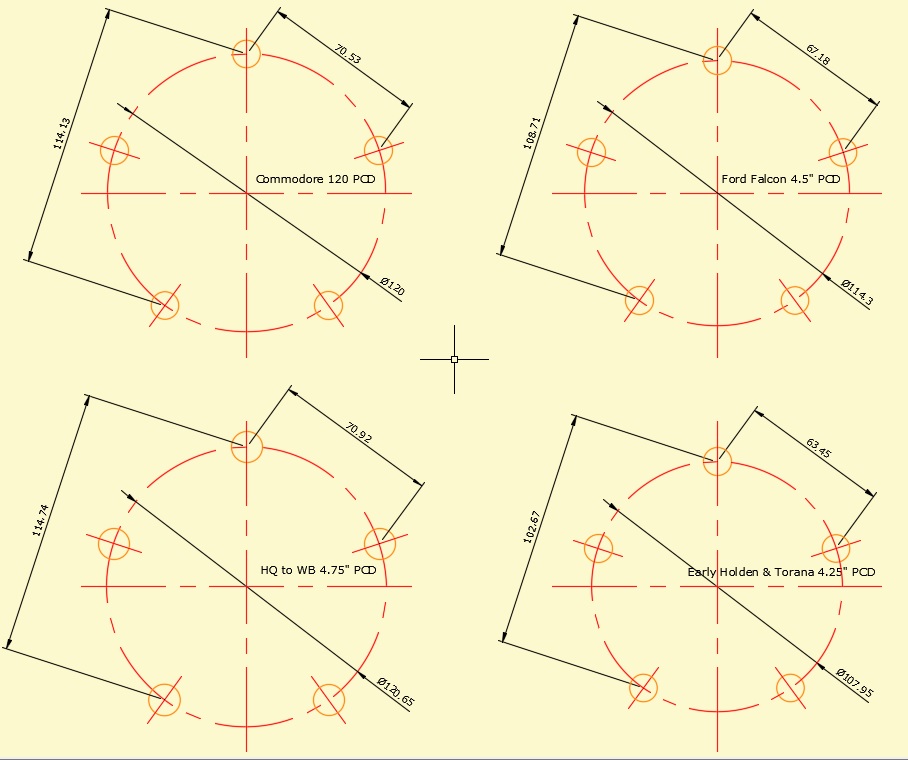
These measurements are centre-to-centre but that's really easy to do with a pair of vernier calipers, just measure from the outside of one stud to the outside of another, then measure the thickness of one stud and subtract from your first measurement.
It's probably worth repeating on different studs / hubs just to make sure the hubs / axles were drilled accurately and none of the studs is in cockeyed.
Edited by Bigfella237, 28 June 2019 - 06:45 AM.
Posted 28 June 2019 - 07:11 AM
And just to clarify, UC Torana stub axles should have either "HOLDEN 163P" / "HOLDEN 164P" or "GM 163P" / "GM 164P" cast into them as mentioned above.
And UC steering arms should have "GM7248" / "GM7249" cast into them.
Posted 28 June 2019 - 02:43 PM
Posted 28 June 2019 - 03:03 PM
The number is on the outside face of the steering arm, you may need to remove the disc rotor to read it. You can just make it out in this photo...

Note that the lower of the three arms pictured (marked "A9X") is a Harrop reproduction item.
Posted 28 June 2019 - 07:32 PM
 814D8C34-D3EC-4E32-BC4B-CD288F079E25.jpeg 196.14K
4 downloads
814D8C34-D3EC-4E32-BC4B-CD288F079E25.jpeg 196.14K
4 downloads
Posted 28 June 2019 - 08:54 PM
Hoppers suggest calipers go to the rear if clearance with the steering tie rod is a problem.
Posted 29 June 2019 - 07:02 AM
As far as I'm aware stub axles are symmetrical except for the caliper mounts, so swapping them shouldn't have any effect on geometry. Aside from that, I guess you could argue that calipers get more cooling at the front, but weight distribution-wise they're better on the back side so... six of one, half a dozen of the other.
The more important thing is to have caliper clearance through full suspension and/or steering travel. Finding a sweet spot where they clear both control arms and the K-member can be tricky. I'd suggest mocking everything up without the coil springs fitted so you can more easily test for caliper clearance under full compression and at full lock.
This would also be a good time to rough-out the ride height, wheel alignment and check for bump steer & camber / caster gain, as well as tyre to mudguard / flare / firewall clearance.
Posted 29 June 2019 - 09:21 AM
Depending on the type of caliper used, but more often than not I have found placing the calipers to the rear will give you more clearance issues. The calipers generally hit the top control arms, so you will not get full steering lock without bending or cutting parts to gain the extra clearance needed. I defently don't like buggering around and cutting control arms to gain the extra clearance needed. I have seen many top control and steering arms buggered all for the sake of people saying I have got big ass brakes.
General →
Torana Trivia and Memorabilia →
Bathurst A9X Torana's: A Photographic HistoryStarted by LX2DR , 23 Nov 2020 |
|

|
||
Holden Tech →
Driveline →
Hydraulic clutch conversion, how long is weld on tab for pedal?Started by fuzzypumper , 24 Oct 2020 |
|
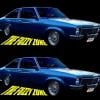
|
||
Holden Tech →
Interior →
UC dash removalStarted by ellsie28 , 22 May 2020 |
|
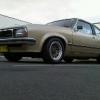
|
||
Members Area →
Members Projects & Plans →
Lx platform to A9X custom clone buildStarted by _Daryl34_ , 21 Jun 2019 |
|
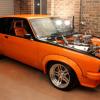
|
||
Holden Tech →
Brakes, Wheels and Tyres →
UC rear brake drumsStarted by _Markxvt_ , 14 Nov 2018 |
|
|
0 members, 1 guests, 0 anonymous users